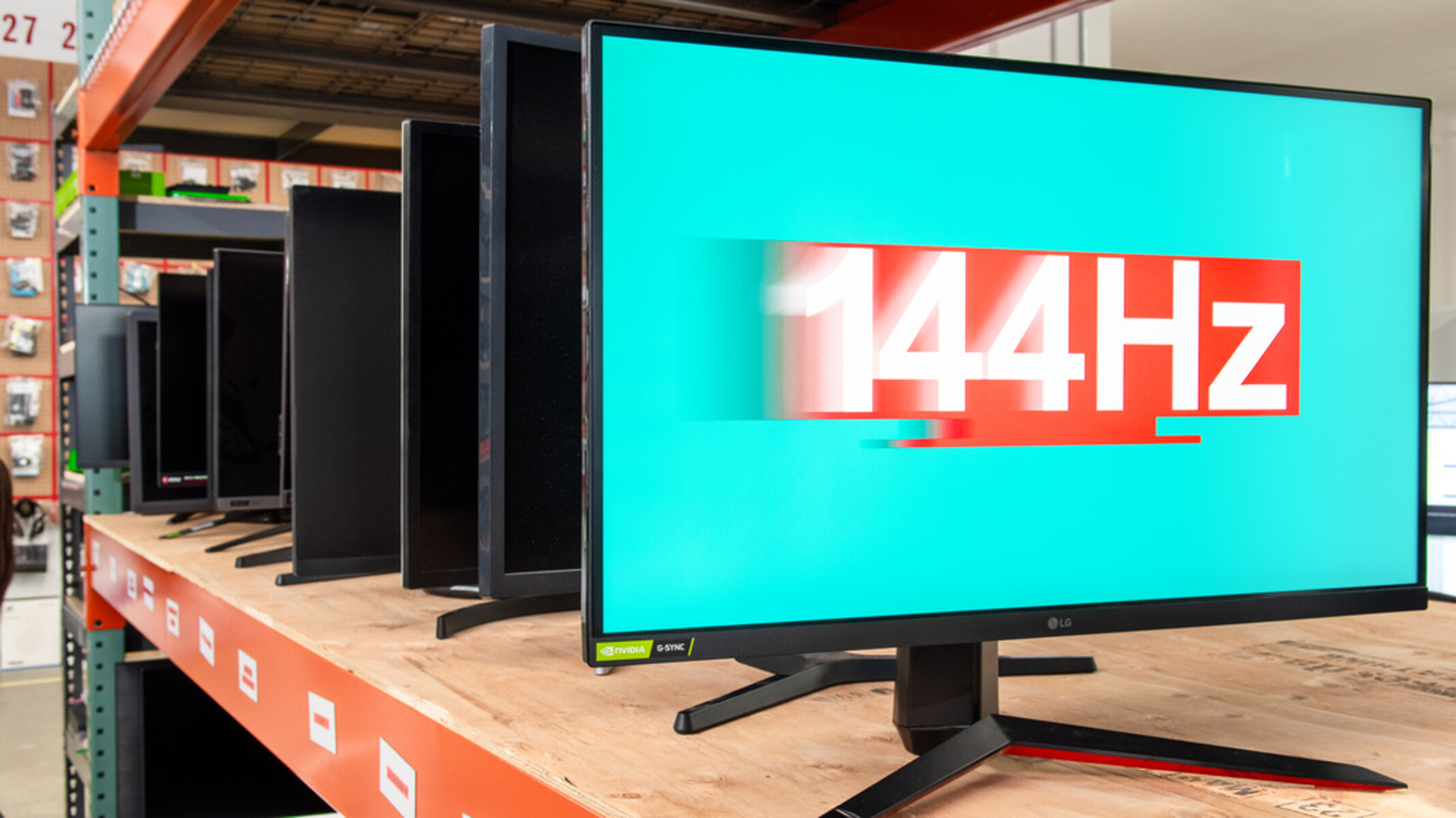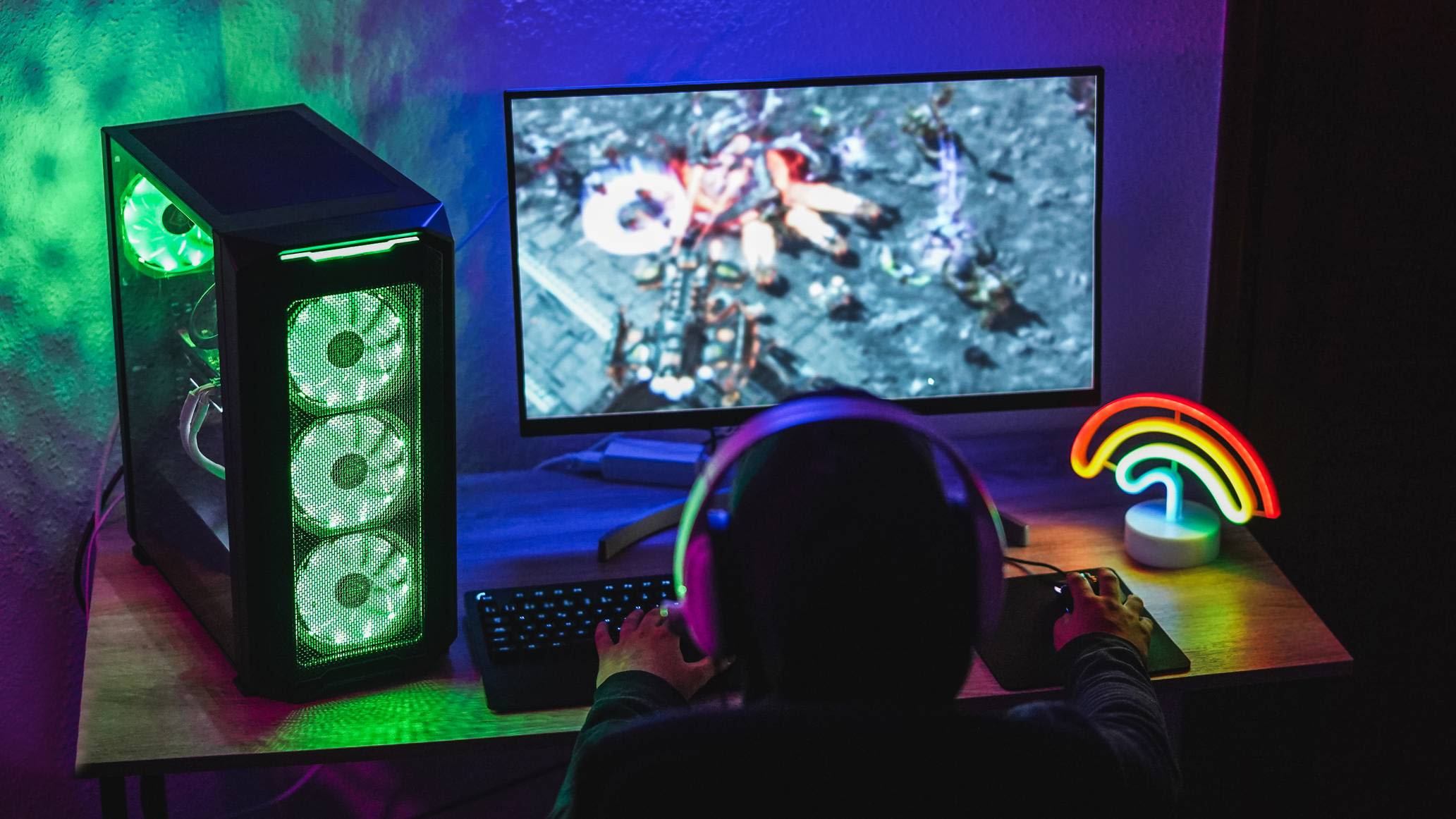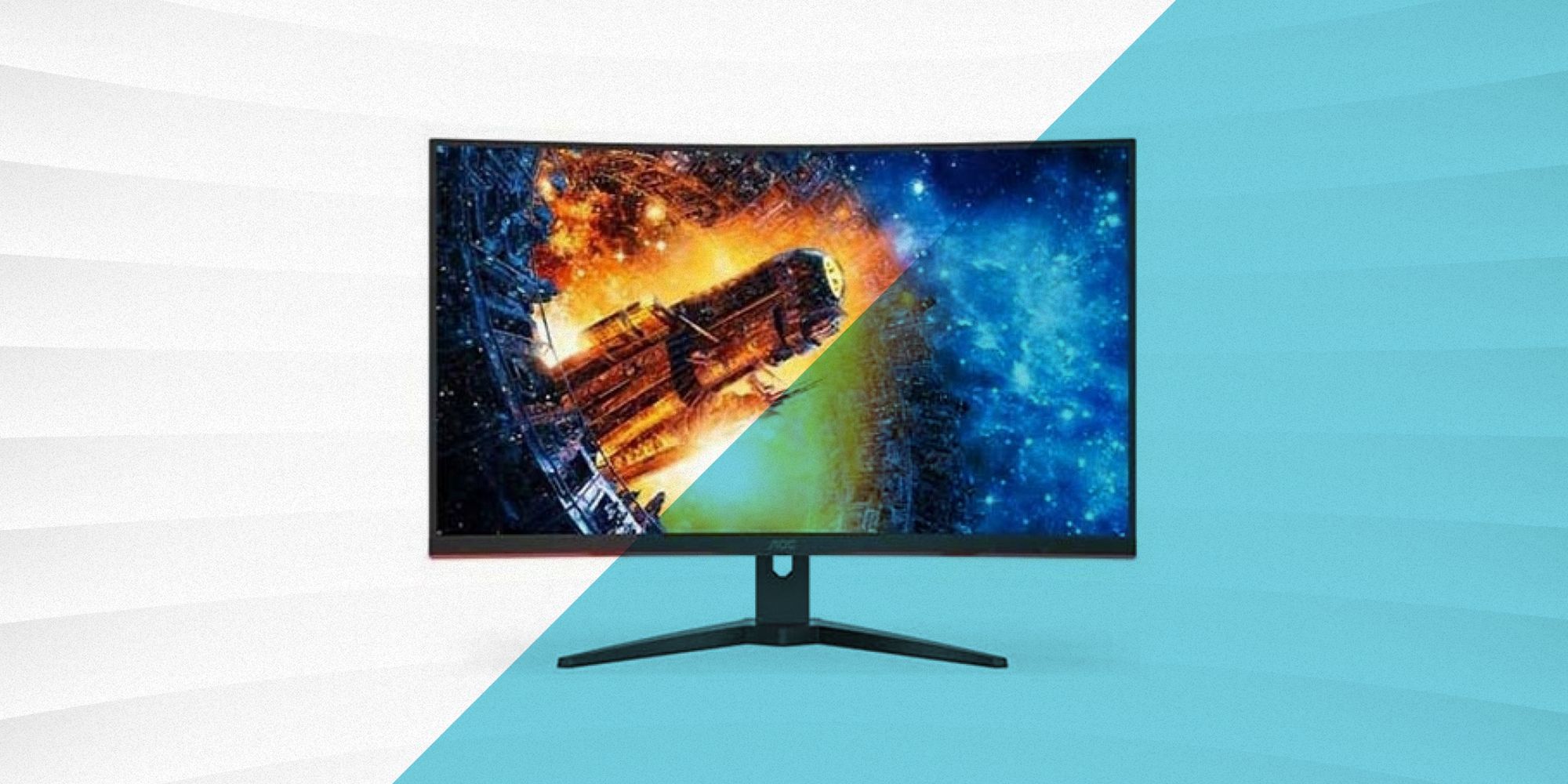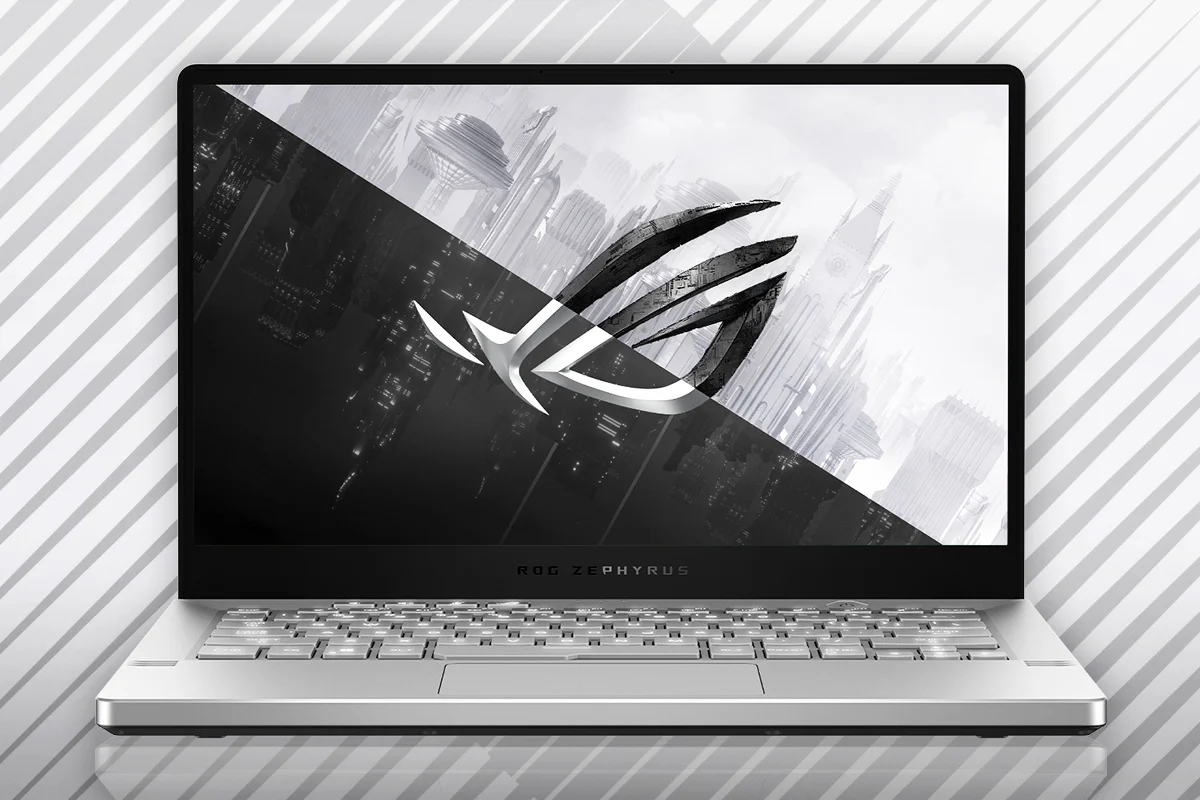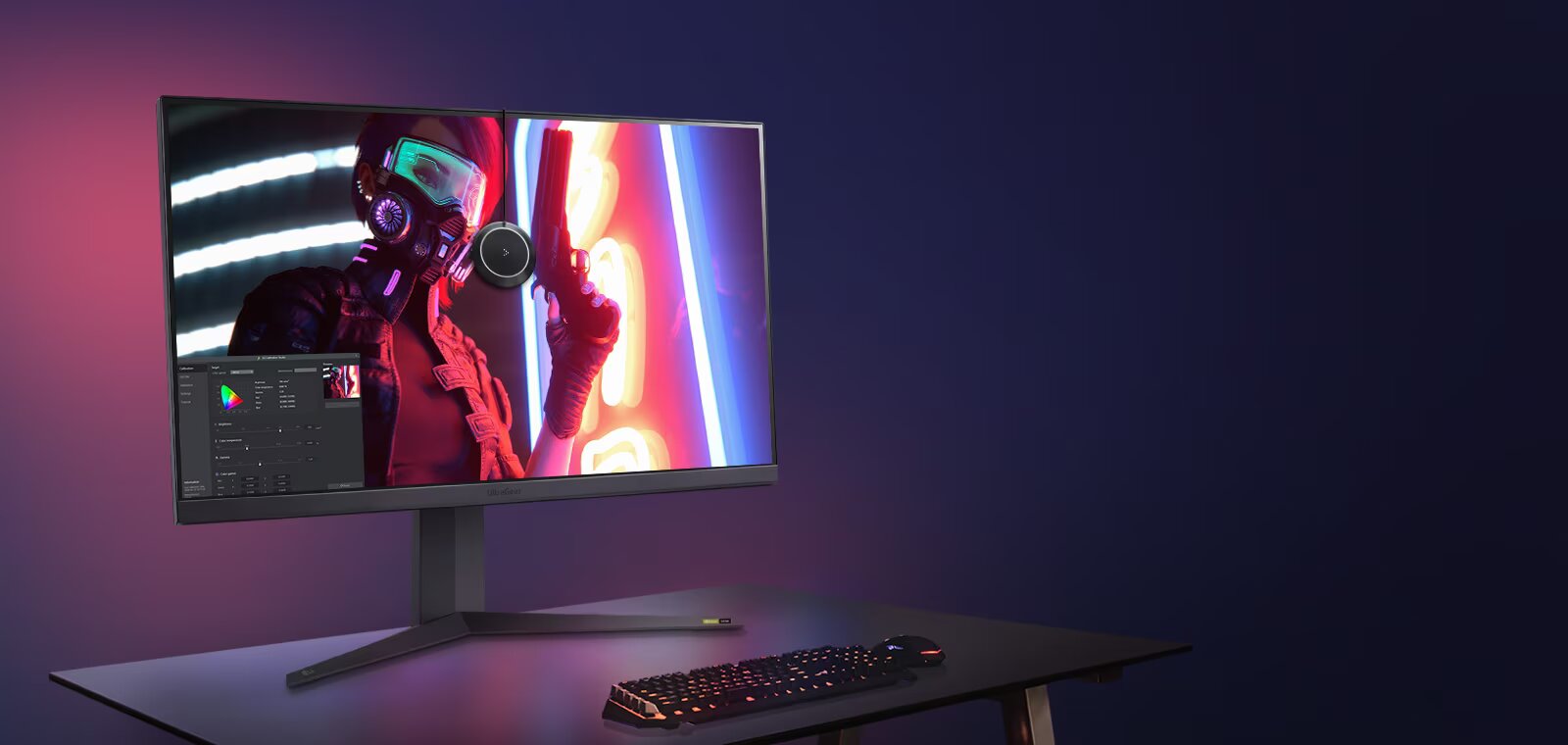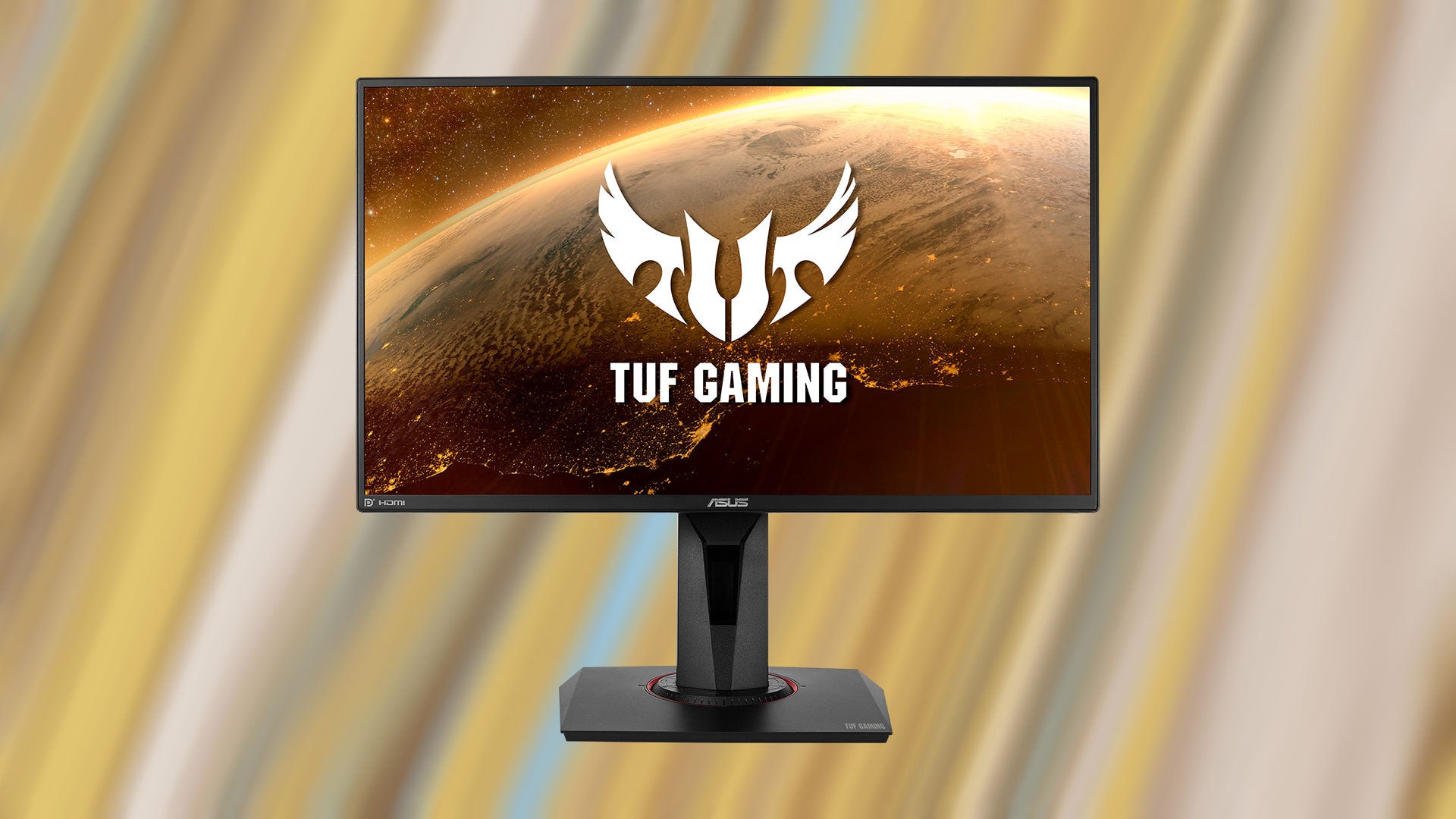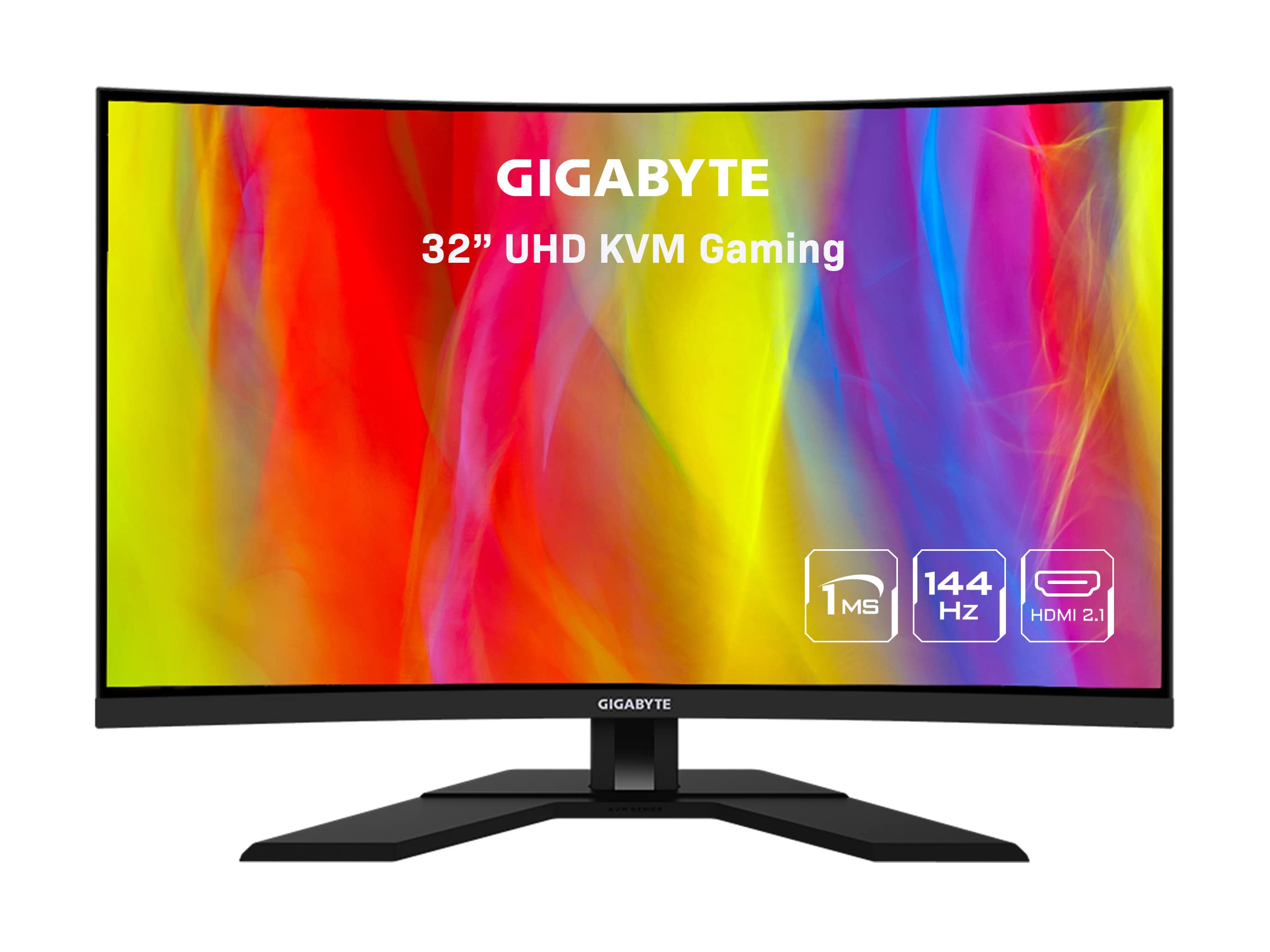Introduction
Welcome to this comprehensive guide on determining which HDMI cables support 144Hz. If you’re a gamer or someone who enjoys high-refresh-rate displays, you know how crucial it is to have the right cable to unleash the full potential of your monitor. While HDMI cables are commonly used to connect devices like gaming consoles, laptops, and TVs, not all cables are capable of handling the higher refresh rates that can enhance your gaming experience.
Before we delve into the specifics, let’s briefly discuss what 144Hz means. The refresh rate refers to the number of times per second your monitor updates the image it displays. A higher refresh rate, such as 144Hz, can provide smoother and more fluid visual transitions, especially in fast-paced gaming scenarios.
When it comes to HDMI cables, there are various types and versions available on the market. The HDMI 1.4, HDMI 2.0, HDMI 2.0b, and HDMI 2.1 are some of the commonly found specifications. However, not all HDMI cables within these specifications support 144Hz refresh rates. It’s important to understand the differences between these cable types and versions to ensure you select the right one for your needs.
In this guide, we will explore the differences between HDMI 1.4, HDMI 2.0, HDMI 2.0b, and HDMI 2.1 cables and clarify which versions can handle 144Hz refresh rates. We’ll also provide you with tips on how to check if your HDMI cable supports 144Hz, allowing you to make an informed decision when purchasing or upgrading your cable. So, let’s dive in and unravel the mysteries surrounding HDMI cables and their compatibility with high refresh rates!
What does 144Hz mean?
If you’re new to the world of high-refresh-rate displays, you may be wondering what exactly 144Hz signifies. Put simply, the refresh rate of a monitor refers to the number of times per second the screen updates with new images. A 144Hz refresh rate means that the display is capable of refreshing the image 144 times every second.
A higher refresh rate, such as 144Hz, offers several benefits, especially when it comes to gaming. With a higher refresh rate, the images on the screen appear smoother and more fluid, allowing for a more immersive and responsive gaming experience. This is particularly noticeable in fast-paced action games where quick movements and rapid transitions occur frequently. A high refresh rate can reduce motion blur, providing clearer visuals and making it easier to track moving objects on the screen.
Furthermore, a 144Hz display can significantly improve the perception of motion, resulting in a more enjoyable gaming experience. This is because the increased number of image updates per second helps to minimize the time it takes for each frame to refresh, reducing the lag between the displayed image and your input.
It’s worth mentioning that while a 144Hz refresh rate offers smooth and responsive gameplay, its benefits may not be as pronounced in non-gaming scenarios. For tasks such as web browsing, document editing, or video playback, the difference between a 60Hz and a 144Hz refresh rate may not be as noticeable.
Keep in mind that achieving a 144Hz refresh rate requires not only a compatible monitor but also a capable video source, such as a graphics card or gaming console, that can output frames at the desired refresh rate. Additionally, the cable connecting your device to the monitor must have the necessary bandwidth to handle the increased data transfer required for higher refresh rates.
Now that you have a better understanding of what 144Hz means and its advantages, let’s explore the different types of HDMI cables and find out which ones support this high refresh rate.
Types of HDMI Cables
When it comes to HDMI cables, there are several types available, each with its own specifications and capabilities. Understanding the differences between these cable types is important to identify which ones are capable of supporting a 144Hz refresh rate.
1. Standard HDMI: This type of HDMI cable, also known as Category 1 HDMI, supports resolutions of up to 1080i and has a bandwidth of 4.95 Gbps. Standard HDMI cables are suitable for most home entertainment setups and can handle basic video and audio needs. However, they may not be equipped to support higher refresh rates like 144Hz.
2. High-Speed HDMI: High-Speed HDMI cables, also known as Category 2 HDMI, offer greater bandwidth than standard HDMI cables. They can support video resolutions of up to 4K at 60Hz or 1080p at 240Hz. These cables are more likely to be capable of supporting a 144Hz refresh rate, especially if they are labeled as “High-Speed HDMI with Ethernet.”
3. Premium High-Speed HDMI: Premium High-Speed HDMI cables are built to deliver the best possible performance. These cables support the latest HDMI features, such as 4K resolution at 120Hz or 8K resolution at 60Hz. With their higher bandwidth and enhanced capabilities, premium high-speed HDMI cables are a reliable choice when aiming for a 144Hz refresh rate.
It’s important to note that the version of HDMI, such as HDMI 1.4 or HDMI 2.0, does not always indicate support for 144Hz. Instead, the cable’s category, such as standard, high-speed, or premium high-speed, will give you a better idea of its capabilities.
Another aspect to consider is the cable’s length. Longer HDMI cables may experience signal degradation, which can affect the ability to support higher refresh rates. If you require a longer cable, it’s recommended to opt for a higher-quality cable with a thicker gauge to ensure optimal performance and support for 144Hz.
Now that we have explored the different types of HDMI cables, let’s dive into the differences between HDMI 1.4, HDMI 2.0, HDMI 2.0b, and HDMI 2.1 cables to determine which ones are suitable for 144Hz.
HDMI 1.4 vs HDMI 2.0
HDMI 1.4 and HDMI 2.0 are two commonly found HDMI versions, and understanding their differences is crucial in determining their compatibility with a 144Hz refresh rate.
HDMI 1.4: HDMI 1.4 was released in 2009 and offered significant improvements over its predecessor, HDMI 1.3. It supports video resolutions up to 4K at 30Hz or 1080p at 120Hz. While HDMI 1.4 cables can handle higher resolutions, they may not always support a 144Hz refresh rate. Some HDMI 1.4 cables may be capable of supporting 1080p at 144Hz, but this is not guaranteed. If you aim to achieve 144Hz, it is recommended to consider newer HDMI versions like HDMI 2.0.
HDMI 2.0: HDMI 2.0 was introduced in 2013 and brought significant enhancements in terms of bandwidth and support for higher resolutions and refresh rates. HDMI 2.0 supports video resolutions up to 4K at 60Hz and 1080p at 240Hz. This means that HDMI 2.0 cables are generally capable of supporting a 144Hz refresh rate, especially at lower resolutions like 1080p. If you have a monitor with a 144Hz refresh rate, using an HDMI 2.0 cable is a good option to ensure compatibility.
When it comes to choosing between HDMI 1.4 and HDMI 2.0, it’s important to consider your specific requirements. If you primarily use your display for gaming and desire a 144Hz refresh rate, HDMI 2.0 is the preferable choice due to its higher bandwidth and inherent support for higher refresh rates. However, if your display has a lower refresh rate or you don’t require a 144Hz capability, HDMI 1.4 may still be suitable for your needs.
It’s worth mentioning that HDMI cables are backward compatible, which means that an HDMI 2.0 cable can be used with a device that has an HDMI 1.4 port. However, the cable’s capabilities will be limited to the specifications of the device or the lowest HDMI version involved.
Now that we understand the differences between HDMI 1.4 and HDMI 2.0, let’s move on to comparing HDMI 2.0 with HDMI 2.0b to determine any advancements in supporting a 144Hz refresh rate.
HDMI 2.0 vs HDMI 2.0b
HDMI 2.0 and HDMI 2.0b are two versions of HDMI that offer improvements over their predecessors. Let’s explore the differences between these versions and see how they impact their support for a 144Hz refresh rate.
HDMI 2.0: HDMI 2.0 was introduced in 2013 and brought several enhancements compared to HDMI 1.4. It supports video resolutions up to 4K at 60Hz, allowing for smoother and more detailed visuals. HDMI 2.0 cables have sufficient bandwidth to handle a 144Hz refresh rate at 1080p resolution. This makes them suitable for gaming enthusiasts who desire the benefits of a high refresh rate. It’s important to note that not all HDMI 2.0 cables can support 144Hz, so ensure that you choose a cable labeled as “High-Speed HDMI” or “Premium High-Speed HDMI” for optimal compatibility.
HDMI 2.0b: HDMI 2.0b is a minor update to HDMI 2.0 and was introduced in 2016. The “b” in HDMI 2.0b stands for “backward compatibility.” HDMI 2.0b added support for High Dynamic Range (HDR), enabling a wider range of colors and greater contrast in supported content. However, HDMI 2.0b does not bring any specific improvements in terms of supporting a 144Hz refresh rate. Thus, HDMI 2.0 cables and HDMI 2.0b cables are generally capable of handling the same refresh rates.
When choosing between HDMI 2.0 and HDMI 2.0b, it’s important to focus on the features that matter most to you. If you require HDR support in addition to a 144Hz refresh rate, HDMI 2.0b might be the preferable choice. However, if a 144Hz refresh rate is your primary concern, HDMI 2.0 is sufficient.
Both HDMI 2.0 and HDMI 2.0b cables are backward compatible, meaning they can connect to devices with lower HDMI versions. However, the cable’s capabilities will be constrained by the specifications of the device or the lowest HDMI version involved.
Now that we’ve explored the differences between HDMI 2.0 and HDMI 2.0b, let’s move on to examine HDMI 2.0b and HDMI 2.1 to see if there are any significant advancements in supporting a 144Hz refresh rate.
HDMI 2.0b vs HDMI 2.1
HDMI 2.0b and HDMI 2.1 are two versions of HDMI that offer notable improvements over their predecessors. Let’s compare these versions and see how they impact their support for a 144Hz refresh rate.
HDMI 2.0b: HDMI 2.0b, released in 2016, is a minor update to HDMI 2.0. It introduced support for High Dynamic Range (HDR), allowing for a wider color range and improved contrast in compatible content. However, HDMI 2.0b does not bring any specific advancements in supporting a 144Hz refresh rate. HDMI 2.0b cables are typically capable of handling the same refresh rates as HDMI 2.0, making them suitable for high-refresh-rate displays.
HDMI 2.1: HDMI 2.1 is the latest version of HDMI, introduced in 2017. It encompasses several significant improvements over previous versions. HDMI 2.1 supports higher video resolutions, including 8K at 60Hz and 4K at 120Hz, providing an exceptionally high level of detail and smoothness. Additionally, HDMI 2.1 introduces Variable Refresh Rate (VRR) technology, which allows the display’s refresh rate to synchronize with the output of the source device, resulting in reduced screen tearing and a smoother gaming experience. HDMI 2.1 cables can handle a 144Hz refresh rate with ease, making them an excellent choice for gamers seeking the best possible performance.
While HDMI 2.1 offers impressive advancements, it’s important to note that it is not yet available on all devices and there may be limited support for HDMI 2.1 cables in the market. Therefore, it’s crucial to ensure that both your display and the source device, such as a graphics card or gaming console, support HDMI 2.1 to fully utilize its capabilities.
It’s worth mentioning that HDMI 2.1 cables are backward compatible, meaning they can connect to devices with earlier HDMI versions. However, the cable’s capabilities will be limited by the specifications of the device or the lowest HDMI version involved.
Considering the improvements and enhanced features of HDMI 2.1, it is the most future-proof option for those seeking the highest refresh rates and resolutions, including 144Hz gaming experiences.
Next, let’s explore how you can check if your HDMI cable supports a 144Hz refresh rate.
How to Check if Your HDMI Supports 144Hz
Now that you understand the different types of HDMI cables and their respective capabilities, you may be wondering how to determine if your HDMI cable can support a 144Hz refresh rate. Here are some steps you can take to check:
1. Read the cable specifications: Check the specifications or product description of your HDMI cable to see if it explicitly mentions support for a 144Hz refresh rate. Look for keywords like “high-speed,” “premium,” or “high refresh rate” to indicate compatibility with higher refresh rates.
2. Consult the manufacturer: If you’re unsure about your cable’s capabilities, reach out to the manufacturer or visit their website for more information. They should be able to provide you with details about the maximum supported refresh rate of the cable.
3. Test it with your monitor: Connect your display device, such as a gaming monitor, using the HDMI cable in question. Once connected, access the display settings of your device and look for the refresh rate options. If your HDMI cable supports 144Hz, you should see the option to select this refresh rate in the settings. Select it and check if your monitor displays the content correctly and smoothly.
4. Check for artifacts or issues: While running content at a 144Hz refresh rate, carefully observe the display for any visual artifacts, flickering, or other issues. If you notice any abnormalities, it could indicate that your HDMI cable is not capable of supporting the higher refresh rate.
If, after performing these checks, you find that your HDMI cable does not support the desired 144Hz refresh rate, consider investing in a higher-quality cable that is explicitly labeled as “high-speed” or “premium” to ensure compatibility with higher refresh rates.
Do keep in mind that achieving a 144Hz refresh rate also depends on other components in your setup, such as the graphics card or gaming console, and the capabilities of your display device. Ensure that all the components in your setup, including the HDMI cable, can support the desired refresh rate to enjoy a smooth and immersive gaming experience.
Now that you know how to check if your HDMI cable supports 144Hz, let’s summarize what we’ve discussed so far.
Conclusion
In this guide, we’ve delved into the world of HDMI cables and their compatibility with a 144Hz refresh rate. We explored the different types of HDMI cables, including Standard HDMI, High-Speed HDMI, and Premium High-Speed HDMI, and discussed how they differ in terms of their capabilities to support higher refresh rates.
We compared HDMI versions such as HDMI 1.4, HDMI 2.0, HDMI 2.0b, and HDMI 2.1 to understand their specific features and whether they can handle a 144Hz refresh rate. While HDMI 1.4 and HDMI 2.0 cables can support 144Hz at lower resolutions, HDMI 2.1 cables offer the best support with its higher bandwidth and additional features like Variable Refresh Rate (VRR).
We also provided guidance on how to check if your HDMI cable supports a 144Hz refresh rate. By reading the cable specifications, consulting the manufacturer, and testing the cable with your display device, you can determine its capabilities and ensure a smooth gaming experience.
Remember that achieving a 144Hz refresh rate requires not just a compatible HDMI cable but also supporting components such as a high-refresh-rate monitor and a graphics card or gaming console that can output frames at the desired refresh rate.
In conclusion, when aiming for a 144Hz refresh rate, it’s recommended to invest in a high-quality HDMI cable that is explicitly labeled as “high-speed” or “premium” to ensure optimal performance. Stay up to date with the latest HDMI versions and their features to take full advantage of the advancements in refresh rates and display technologies for an immersive gaming experience.
Now that you are equipped with the knowledge of HDMI cables and their compatibility with a 144Hz refresh rate, you can make informed decisions and enjoy the benefits of smoother and more responsive gaming.







